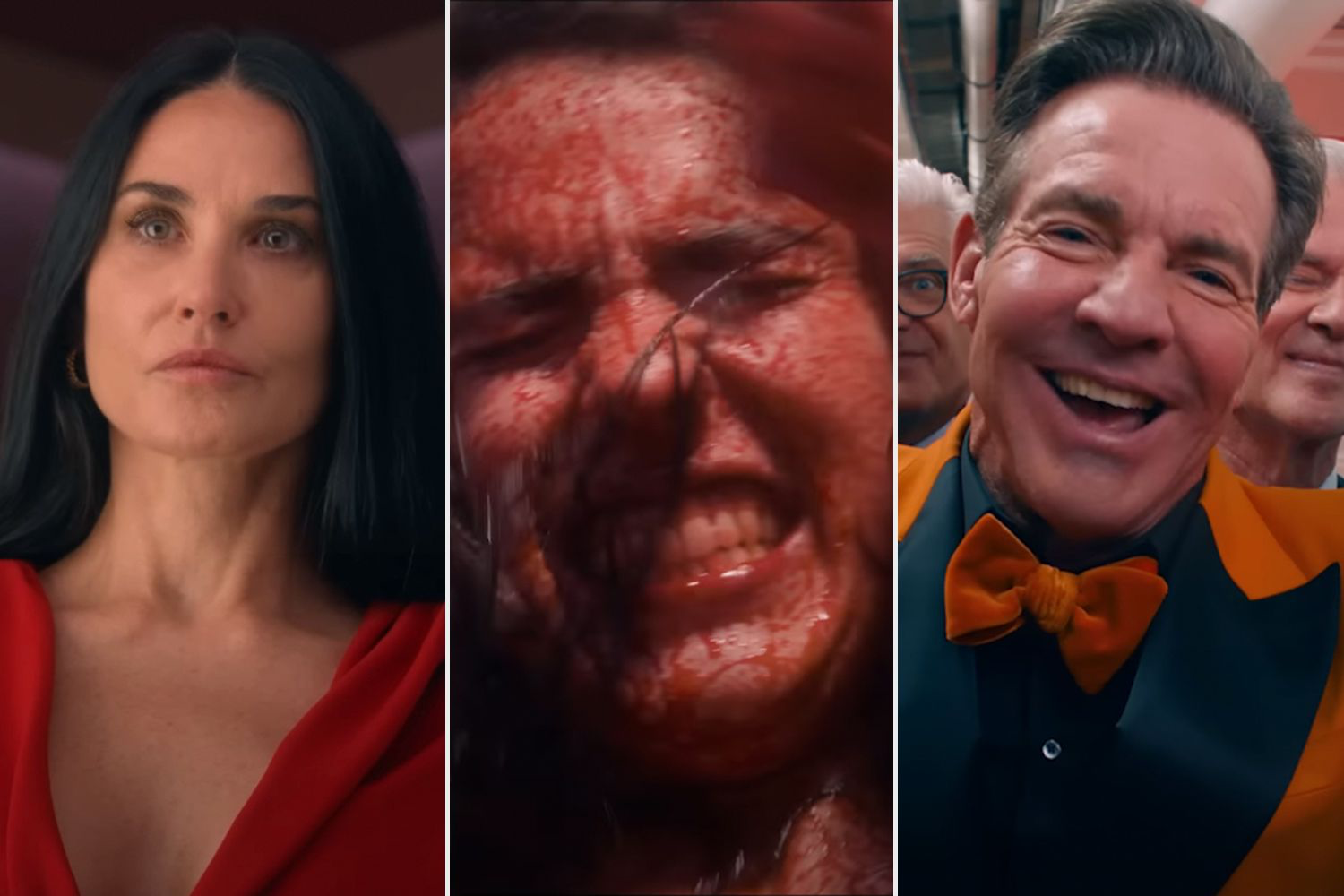The Substance
The New Parkway Theater
474 24th St, Oakland
We say body horror, I believe, because we have no better words. But, as one female viewer said, is that not just every 26 days as a woman? To paint the town, or theater, red with your pain, to present the fullest, raw and exposed version of your most monstrous self to anyone in your way? Monstro Elisasue is Elisabeth, Sue, and maybe all of us, in French filmmaker Coralie Fargeat’s latest feminist sci-fi/horror/comedy “The Substance,” but it seems none of us, myself very much included, have found apt descriptors for the film that do not rely on the female body as an inherent source of horror.
October kicked off with one helluva heatwave here in the Bay, so seeking temporary respite from the raised temps and worldly horrors surrounding us required films. Unfortunately, after getting seated in everyone’s favorite cozy couch-lined venue we were informed that the AC was out. Well, too late and too bad, we were already strapped in for the journey. One of my companions had neglected to look up the film prior to arrival, so I really got a double feature—the movie we’d come to see and the wild eyes of a man confronted with unexpected ladyblood, a whole lot of it.
The film follows Demi Moore’s Elizabeth Sparkle, a no-longer-fresh-faced Jane Fonda type, on her quest for eternal youth, here found through a chance encounter with a bright-eyed young doctor. After watching a mind-numbingly basic bro video on a mysterious substance, she makes a call, goes to the sketchy address provided, and scans into a locker for the goods. Back home, the eponymous fluorescent green goo fills a syringe, then Sparkle’s veins, and she passes out. Margaret Qualley, as 20-something Sue, emerges from Sparkle’s spine and takes the first seven-day spin in their bio-dictated switch-off schedule.
Then, it takes a few more left turns.
(An update from our uninitiated friend, a text to a group chat about an hour in:
“Sarah took me to watch porn 😔😔😔😔”)
Fargeat’s eye is powerful—far from all seeing, she guides us expertly, a master class in objectification. Extraneous nudity, none of it sexual, lines drawn at lust and disgust. Sparkle’s internal judgments are cast out into our laps, as is our unchecked desire for, interest in, Sue’s pep, her taut, lithe limbs, abs, the coy turn of her glossed lips.
The sparing dialogue leaves ample time for lingering and sweeping shots of hallways, billboards, wall-sized photos, soulless perky smiles, age-textured skin, and sagging, thin-skinned butt cheeks. Brutal, harshly shadowed versions of Moore, painted haggard beyond her Hollywood-smooth sixty year old body. Slo-mo highlights of Qualley’s equally thin but invigorated, pulsing frame twerking, thrusting, winking. The production’s heavy use of intricate prosthetics exaggerate the horror that is a human form, with silicone rearing its ugly head in an unexpected ways for Hollywood.
(Another check in via group text, nearing the end
“Fuck
Sarah’s
Movie
Choices
What
The fuck
I pick the movies from now on
Fuck these two no way I’m about to walk out”)
Births and surgeries, or just monthly menses; for many of us who bleed, not only are these facts of life, but they’re hardly even the gross ones. Dennis Quaid’s turn as cartoonishly grotesque, perpetually distorted turn as evil TV exec left a far, far worse taste in my mouth than any lingering gross-out shots of bodily horrors. Fargeat manages to turn the viewer’s disgust back on themselves, to make us examine why we so readily accept the position that an aging body should be repulsive, hidden, cast away in favor of a new, better model.
The film ends in gore, sure, but once again, I question whether this is body horror. Blood and guts and an aging woman alone do not make for the stuff of nightmares in the real world, if you’re able to see past projected beauty, that is. In the final scenes, Monstro Elisasue, equal parts grotesque and repulsive, endearing and loveable, rears a head to cry out but is silenced by her own blood. And we, the audience, cannot help but cry out with her because relatable, no? One shout, as she took the stage, in our theater at least was highly encouraging: “Girl you look good!”
I was introduced to Qualley, like many I think, via an explosive 2017 perfume advertisement. Given this dance prowess and her commitment to the bit, along with the clearly feminist bent to the film, I was left a bit disappointed here with Fargeat, feeling that Qualley’s physicality and Moore’s nuance of character were underutilized. But, as I overheard another viewer say out front afterwards, “I would see more horror if it were like this.”
(Final update from horrified male viewer:
Huge fan, best movie ever—after Megalopolis, of course. End of take).
It was recently announced that Moore will star in local fave Boots Riley’s next film, so consider this your warning that she’ll be covered here again soon.






